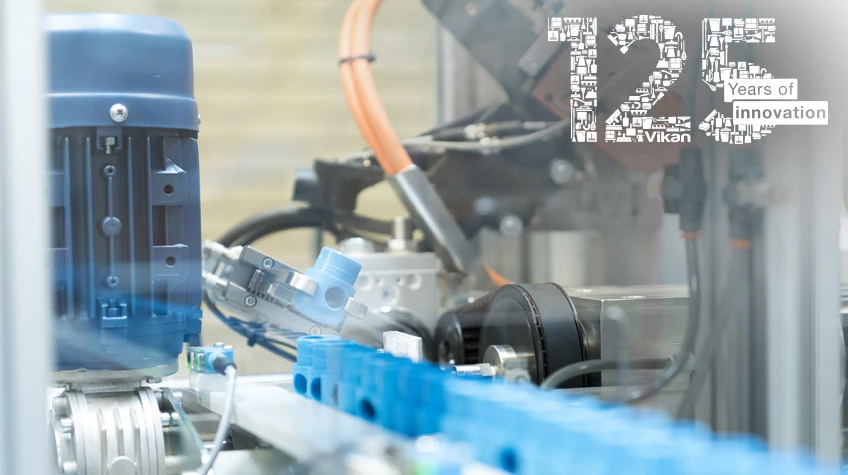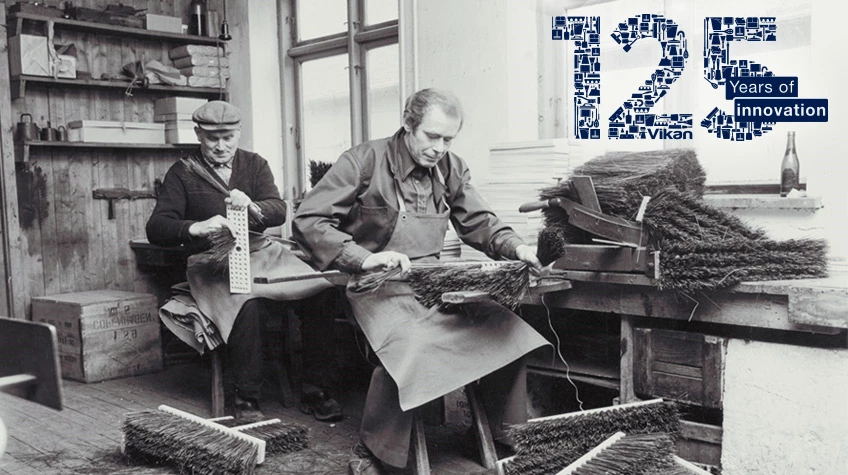This blog post is part of a brief series that celebrates Vikan’s 125th anniversary. We’ve dug into the archives to uncover stories that highlight key themes and milestones in our journey so far. In doing so, we hope to offer insight into who we are as a company today. What's in a brush? That's a question we take very seriously—literally. In fact, you can trace the entire 125-year history of our company by looking at the materials used in our products. Before we dive deeper, let’s explore why these materials matter so much. Brushes and cleaning tools aren’t just about cleaning—they must also be clean themselves. A dirty tool won’t do a good job. The choice of material, along with the design, plays a crucial role in both how well a tool cleans and how easy it is to keep clean. In the 19th century, when Vikan was founded, brushes were made from wooden heads and natural fibers like horsehair, boar bristles, and piassava. These were tied together with twine and inserted into the brush head. At the time, the focus was on effectiveness and durability, since early cleaning tools had to last a long time without frequent replacement. Vikan founder A.P. Pedersen carefully selected the best natural fibers for each type of brush—scrub brushes, street sweepers, dairy brushes, and more. Records show he worked with at least four types of piassava fiber, along with horse and boar hair, which came from distant places like India and China. By the 1930s, Vikan had its own mixing room where different fibers were combined for specialized uses. During World War II, limited access to foreign markets pushed the company to find alternative materials—showing an early sign of Vikan’s innovative spirit. Still, the goal remained clear: produce effective and durable cleaning tools. Starting in the mid-1960s, Vikan began producing plastic brushes. But everything changed in the early 1970s when a study revealed higher bacterial levels in refrigerated areas after cleaning. This sparked a new era for Vikan, where tools needed to not only clean but also be hygienically clean themselves. Vikan tackled this challenge the same way it always had: by rethinking the materials used in its cleaning tools. The conclusion was clear—synthetic materials like plastic and nylon were the future. This led to the creation of the revolutionary “White Series,†designed specifically for the food and beverage industry. Today, Vikan is recognized globally as a leader in hygienic cleaning tools. Our products are built to last and remain clean, enabling them to perform effectively in sensitive environments. An interesting point is that sometimes, it's what we stop using that makes the difference. For example, by eliminating staples and resin, our UST range has removed potential food contaminants. Today, cleaning tools that come into contact with food must meet strict food-contact compliance standards. Vikan leads the industry by using only approved materials and providing detailed Declarations of Compliance online for every product. This ensures transparency and trust. From wood and natural fibers to modern plastics and nylon, the materials Vikan has used over the years have played a vital role in establishing our leadership in hygienic cleaning tools for the food and beverage industry. In his memoir, Life and Works, Vikan founder A.P. Pedersen recounts a number of experiences from the company’s earliest days and reflects upon these as an older man looking back on his life. Some of these stories reveal how innovation became deeply embedded in Vikan’s culture. There is no doubt that Vikan’s 125 years of growth—and the company’s current position as a global market leader—are closely linked to technology. From early innovations in materials to modern digital solutions, technology has shaped our journey. Ever wondered what the Vikan name means, and where it comes from? Here’s the answer. It’s a story rooted in history, tradition, and the vision of a man who wanted to create something lasting. Easy to carry air cushion cream,moisten air cushion cream,Skin whitening air cushion cream,Sun protection air cushion cream Guangzhou Boxuanya Cosmetics Co.Ltd. , https://www.cosmeticsbxy.comThe importance of materials in Vikan’s history

Recent blog posts

The origins of Vikan’s approach to innovation

Vikan, technology, and people

Vikan - the story behind the name
See all posts
Lotte Jensen - Marketing Project Manager
Lotte Jensen - Marketing Project Manager
Lotte Jensen - Marketing Project Manager